The best humidity for bearded dragons 30-40% (relative humidity). Providing the best humidity levels for a bearded dragon in their enclosure will support their health and well-being.
Best Humidity Level for Bearded Dragons
What humidity do bearded dragons need? Bearded dragons don’t need a lot of humidity. The recommend the ideal humidity bearded dragons need is between 30-40%. (School of Veterinary Science UQ, 2015; Proceedings of the Australian Veterinary Association, 2011).
The recommended humidity level for bearded dragons is very broad and based on relative humidity. It is assumed that all species of bearded dragons, in all seasons, day and night require between 30-40% humidity.
Keepers who live in Australia will already have the right humidity conditions for bearded dragons kept outdoors since only the species naturally available in the state can be kept. Bearded dragons kept inside may not have the right temperature as air conditioners, fans and heating can all interfere with normal levels.
For Queenslanders, the Queensland Code of Practice for Captive Reptile and Amphibian Husbandry requires that keepers monitor the humidity in the enclosure regularly. This is a perfect practice for all reptile owners.
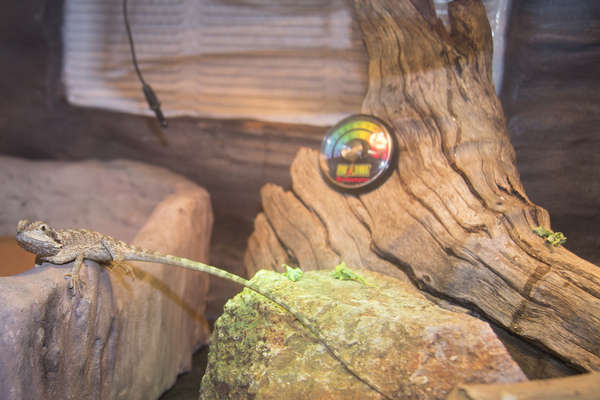
How Temperature Affects High or Low Humidity
So you thought you had the perfect humidity for your bearded dragon and then boom! It went right up in the night! #*$*?!? That is relative humidity!
Relative humidity is how much water vapor the air is holding at a given temperature and this is expressed as a percentage. The maximum level of humidity (100%) is saturation point. The hotter the air, the more water vapor it can hold. So the amount of water vapor in the air is relative to the temperature.
At a relative humidity of 40% (ideal humidity level for a bearded dragon) means the air holds 40% of the maximum water vapor that it can at that temperature before it would become saturated.
Air with a temperature of 30°C can hold more than three times as much water vapour as air at 10°C.
Commonwealth of Australia, Bureau of Meteorology
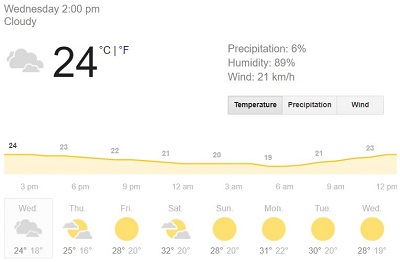
This helps clear up why it seems that humidity goes up at night. The humidity of a bearded dragons tank may seem fine during the day, but at night it appears to increase. In fact, it is more likely that the temperature dropped.
Once the temperature dropped, as it should do at night, the air cannot hold the same level of moisture that it did during the day which made the relative humidity higher. Turn the heat back up and the relative humidity reading will start to decrease again. So, if the night time humidity for bearded dragon housing sometimes seems to high but it was fine in the day, chances are the temperature dropped.
The warmer the air is, the higher its capacity to hold moisture. As temperature increases, the relative humidity decreases even though the water level remains the same. This relationship is important to understand in order to manage humidity.
How to Measure Humidity
Hygrometers read the humidity of a bearded dragon tank. A hygrometer measures the amount of humidity and water vapour in the atmosphere.
Choosing the Right Hygrometer
Hygrometers are either analogue or digital. Both are suitable for a bearded dragons house.
Installing two hygrometers is best. This will provide a backup, an easy visual check on their performance and placement. Placed slightly apart a wider area can be monitored.
Analogue hygrometers
Pros – No battery
Cons – No probe so the hygrometer must be placed in position to be measured
Digital hygrometers
Pros – Probe can be placed where the humidity is to be measured from and the display can be placed where it is easy for you to read
Cons – Requires a battery and the cord needs to be tucked away
Buy both an analogue and digital hygrometer. Installing both gives a backup and a means to pick up quickly on any discrepancy in accuracy of readings.

Where to Place a Hygrometer
Hygrometers are best placed somewhat centrally. Unlike thermometers, there is a lot more flexibility in where they can be placed while still being effective however, there are some key things to understand.
We know that relative humidity is relative to the temperature. The temperature gradient in a bearded dragons house has a range of around 20°C difference from one end to the other. The placement of the hygrometer, cool end of the tank to the hot end, makes a huge difference to the humidity reading.
Assuming the housing heating and lighting has been set up correctly, just place the hygrometer or its probe centrally on the back wall.
Digital hygrometers may come with or without a probe. Hygrometers with a probe provide much more freedom of placement. The probe and digital display can be placed apart making it easy to put the display wherever you can access it best.

Don’t place the hygrometers or their probes in live plant foliage (artificial plant foliage is fine). Avoid corners where air circulation might be limited or over a water dish. These areas will exaggerate the level of water vapor in the air giving a reading that is not accurately reflect the environment.
Avoid letting the probe dangle down in the housing. A curious bearded dragon could always eat it. Place probes against a wall or accessory.
Increasing and Decreasing Humidity Levels
We know that humidity is all about the level of water vapor in the air. So it makes sense that to control humidity, you need to be able to adjust the amount of water vapor in the air.
Water vapor is added to the air through evaporation and transpiration and removed by condensation or freezing. If the humidity levels are wrong, then look at where evaporation or transpiration is occuring.
Before delving into adjusting the bearded dragons habitat, check the room the bearded dragon is housed in. It might be that the climate is humid, in which case that is where the focus needs to be. If it isn’t the wider environment, then investigate the animals housing.
Modify one thing at a time to resolve humidity level issues and monitor the hygrometer over the next few hours to check the results. This way if anything corrects the issue, it will be easier pinpoint what the solution was.
How to make a reptile tank less humid
To lower humidity in bearded dragon housing, reduce the water in the environment. This in turn reduces evaporation and transpiration.
Remember, before trying to adjust the humidity of a bearded dragons habitat, check the placement of the hygrometers.
Here are 7 quick and simple ways to lower the humidity for a bearded dragon:
- Check the placement of the hygrometer. The location of the hygrometer makes a difference to the reading. The cool side of the housing will give a different reading to the hot.
- Increase the ventilation. This is by far the easiest and quickest way to lower the humidity. Increasing ventilation in glass tanks is one of the reasons housing bearded dragons in glass tanks is problematic as it is difficult to add ventilation to a glass wall.
- Put a hygrometer near the tank in the room it is placed in to check if the environment is causing the issue. If it is, can the ventilation in the room be increased or the tank be moved to a different room that has less humidity?
- Reduce evaporation by moving any water sources away from heat. For example, move the water bowl to the cool end of the tank.
- Reduce transpiration by moving any live plants to another room.
- Place one or more socks of rice in the enclosure.
- If the humidity is at extreme levels it is presumably exasperated by climate, use a dehumidifier in the room.

High humidity levels present far more danger than low humidity. Some keepers report humidity level increasing at night and not so much through the day. Reading the section in this article Understanding relative humidity will help explain why this may be the case as temperatures will drop during the night.
Fans
Clearly fans move air and in doing so will lessen any differences in temperature range as it mixes the air. Fans may be useful in lowering the humidity for bearded dragon kept in tanks and other housing that does not support air circulation. However, this may also reduce the temperature gradient of the environment which is important and may become irritating to the bearded dragon.
Adding ventilation
If the housing is made of melamine or other materials easily modified, then more vents can be added. This will allow more air to circulate, leveling out the humidity closer to that of the room the habitat is kept in. Vents can be purchased from any hardware store in many different sizes.

Vents come in a range of styles and some have a level to close off the vent on days when heat needs to be retained (such as winter).

Glass tanks are not good for bearded dragons. It is very difficult to add air circulation to a glass tank (which is the easiest way to lower high humidity levels). Glass tanks have the perfect qualities for fish but not so good for creatures that need good air circulation.
Unfortunately manufacturers and pet shops have financial incentives for selling tanks. Tanks are easy to mass produce which can make the prices very competitive and attractive. In turn this reduces the cost of entry making it easier for pet shops to encourage new reptile keepers to buy them. However it is unlikely to be the best option for the health or wellbeing of the bearded dragon. Not only are glass tanks typically small 4 foot or less, they are also difficult to keep warm or correct humidity.
Repurpose glass tanks (aka reptarium, vivarium) for breeding and/or maintaining insects, as a feeding enclosure or as a quarantine environment.
For the DIY enthusiast, create your own housing, see DIY housing. In some cases, skills with carpentry tools is not required to create practical and beautiful, something to be proud of.
Dehumidifier
If lowering the humidity down to the ideal humidity level has not been successful with the quick and easy options above, then a dehumidifier may help. The desiccant and refrigerant dehumidifiers are reasonable options.
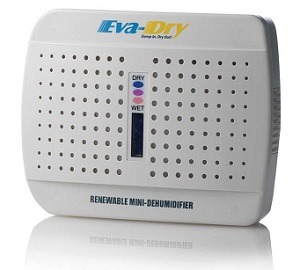
The desiccant dehumidifiers range from small portable units which can easily be added to any environment, to large ones suitable for rooms.
Some dehumidifiers can be added directly to the environment. Desiccant dehumidifiers work using a renewable silica gel that absorbs moisture. Somewhere between 3-8 weeks the gel goes to its full capacity point and needs to dry out so it can remain effective.
Anything that is added into the enclosure must also become part of the cleaning routine. Consider how the dehumidifier can be disinfected when cleaning. Anything that isn’t electrical should be easy enough to spray with disinfectant.
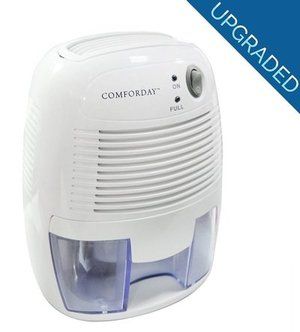
From there the refrigerant dehumidifiers may be useful for temporary relief. Some start for as little as $50 US.
If a dehumidifier is needed, it is likely that the environment the bearded dragon is kept in is not suitable and needs replacing.
How to Raise the humidity in a bearded dragon tank
To raise humidity in a bearded dragon tank simply add more moisture to the environment, increasing evaporation and transpiration.
Here are 5 quick and easy ways to raise humidity for a bearded dragon:
- First, check the placement of the hygrometer. The location of the hygrometer changes the reading it displays. Relative humidity is impacted by temperature.
- Add a water dish towards, or in, the hot end of the tank (be mindful of hygiene, replacing water daily and water levels to prevent drowning).
- Mist branches, or soak them, and place them near the heat lamp (be wary of placement and possible hazards such as fire). This will only last for hours.
- Add plants, especially broad leaf plants. These will help bring moisture into the environment (ensure the plants are suitable for the bearded dragon).
- Add a fogger with a timer to come on at set intervals during the day.
Keep in mind that the room the enclosure is in is likely to directly affect the microenvironment. It might be that adjusting the room will resolve issues in humidity in the enclosure. Measure both the room and enclosure with a hygrometer to identify which one needs adjusting to resolve any humidity issues quickly.
Low humidity levels are relatively easy to increase. Simply misting the bearded dragons in their enclosure daily and ensuring they are hydrated (fluids by mouth) may be sufficient to compensate for low humidity. For tips and tricks to get a bearded dragon to drink, see the article on teaching your bearded dragon to drink.
Health Issues Caused by Incorrect Humidity Levels
Too much humidity is bad for bearded dragons
Too much humidity is bad for bearded dragons. High humidity presents danger of harmful bacteria and fungus thriving and reaching levels that exceed the resistance of the immune system. Exacerbated by small environments with waste such as faeces, uneaten food or other waste material the concentration levels of excessive pathogens can rise quickly. Health issues can include:
- Bacterial infections [Chambly Veterinaire, 2016; Chambly Veterinaire, 2016]
- Ulcerative or Necrotic Dermatitis [School of Veterinary Science UQ, 2015; Divers, 2015]
- Mycotic disease [School of Veterinary Science UQ, 2015; Divers, 2015]
- Respiratory diseases [McCormack, 2015]
Low humidity is bad for bearded dragons
Low humidity is bad for bearded dragons, although easier to remedy through alternative means. The greatest immediate health concern for low humidity for bearded dragons is dehydration. << link to post on how to get a bearded dragon to drink
Serious dehydration is not the only threat. Constant mild dehydration can cause deadly health issues. Health problems which may be contributed to by low humidity are also ones that are attributable to dehydration and include:
- Avascular necrosis (juvenile Bearded Dragons are more susceptible) [Axelson]
- Dysecdysis (difficulty in shedding) [Axelson; Chambly Veterinaire, 2016; School of Veterinary Science UQ, 2015]
- Renal disease [de la Navarre, 2008; Gibbons, 2007; Chambly Veterinaire, 2016]
- Non-obstructive Dystocia (eggs cannot be passed)[Axelson; Melidone et al, 2008]
- Urinary tract disease [Gibbons, 2007]
How much Humidity do Bearded Dragons Get in the Wild?
The humidity bearded dragons get in the wild ranges from environment and season. However, bearded dragons such as the Pogona vitticeps (most commonly kept in captivity) generally range in areas of an average relative humidity between 30 and 50%.
The range of natural environments bearded dragons can live in is huge. The geographical distribution of each of the Pogona species varies. Along with that variation of territory, comes a range of different climatic conditions.

The map below shows the distribution of the Pogona vitticeps, Pogona barbata, Pogona henrylawsoni, Pogona minor and Pogona nullarbor. The distribution data is from the Australian Reptile Online Database (AROD) overlaid on a map from the Australian Government Bureau of Meteorology displaying the relative humidity ranges at 9am over a 30 year period (1961-1990).

The map above shows some of the bearded dragon species range overlayed on the average annual humidity levels. The humidity is taken at 9am before the day warms up too much. This is great for a general idea but of course in reality, relative humidity goes up and down with temperature. So from one hour to the next, one season to another, the humidity fluctuates.
On the map below, the annual average at 9am and at 3pm are shown without the bearded dragon distribution overlay. This shows the humidity from one time in the day to another can range quite significantly. In the mornings, the relative humidity is higher than in the afternoons.

The following map shows the average annual humidity over a 30 year period for Summer in the month of January and a winter month of July at 9am. For the Pogona vitticeps (see distribution on the map at beginning of this section), 20-50% would cover most of their range.
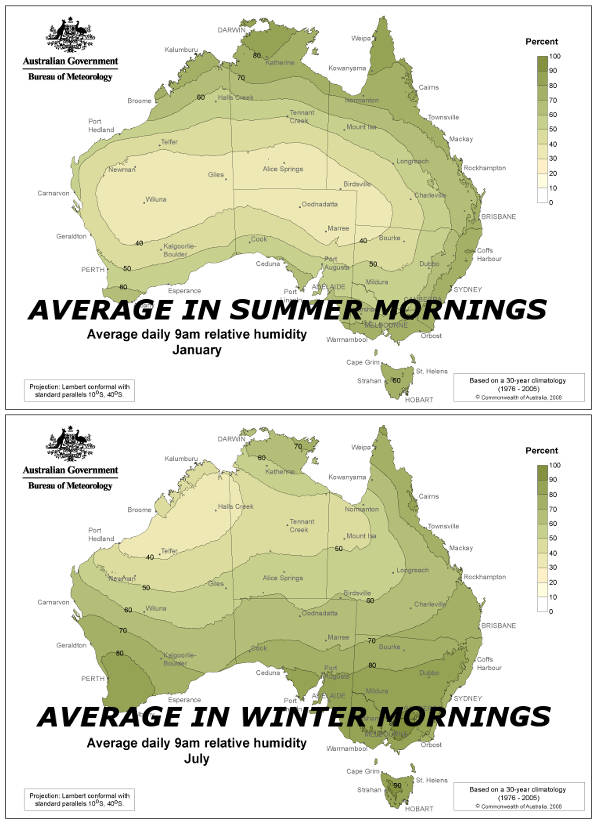
Further Reading and References
- Axelson, R. DVM. (Care & Wellness, Medical Conditions, Nutrition, Zoonosis and Human Health) Bearded Dragons – Problems. VCA
- Divers, S. J. , BVetMed, DZooMed, DACZM, DECZM (herpetology), FRCVS, Professor of Zoological Medicine. University of Georgia. (Updated 2015) Mycotic Diseases of Reptiles. MSD Manual Veterinary Manual.
- de la Navarre, Byron (2008) Acute and chronic renal disease (specifically in lizard species) (Proceedings). DVM
- Gibbons, P. M. DVM. (2007) Reptile and Amphibian Urinary Tract Medicine: Diagnosis and Therapy. Animal Emergency Center, Glendale, WI 53066 USA
- McCormack, S. BSc (Hons), MVB, MRCVS. (2015) Respiratory Conditions in Reptiles
- Melidone, R., Knoll, J. S., & Parry, N. (2008) Preovulatory stasis and dystocia in oviparous lizards. Veterinary Medicine. 103(11):595-598
- Hôpital Vétérinaire Chambly 2016 Vivarium
- Captive Reptile and Amphibian Husbandry. Code of Practice. Wildlife management. Nature Conservation Act 1992. Department of Environment and Heritage Protection
- Atlas of Living Australia.
- Proceedings of the Australian Veterinary Association (Sep, 2011) Handling and Nursing Reptiles. New South Wales Division Conference, Tamworth
- The School of Veterinary Science UQ (2015) How to Care for Your Bearded Dragon. VETS Small Animal Hospital (part of the University of Queensland, Australian)
- Distribution data Australian Reptile Online Database
- Australian Government Bureau of Meteorology
- What is humidity? How is it measured? Math and Science Activity Center






